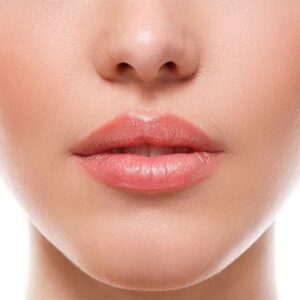
The skin is susceptible to damage due to factors such as aging, sun rays, pregnancy and air pollution. With the decrease in collagen production, the skin becomes wrinkled and begins to lose its former elasticity.
Fractional carbon dioxide laser application, which is one of the applications we apply when the quality of the skin starts to decrease and becomes stained, is a process that achieves successful results when it is performed within the correct planning.
What is Fractional Carbon Dioxide Laser?
The safety of the fractional carbon dioxide laser is proven by the FDA. It is an application that offers the advantage of renewing the skin by affecting the upper and middle layers of the skin.
Fractional carbon dioxide laser application, especially in the treatment of acne and acne, surgery, burns, wounds, suture marks, cracks formed after pregnancy and childbirth, skin wrinkles and tightening, facial sagging as opposed to aging, spots caused by old age and sun, melasma, that is, spots on pregnancy mask. applied to the elimination.
How is Fractional Carbon Dioxide Laser done?
Fractional carbon dioxide laser application does not require general anesthesia. The procedure can be made comfortable with anesthetic creams and local anesthesia.
Before starting the application, the skin should be cleaned first and then the application should be started. This application, which takes about 20-30 minutes, is not an application that requires special preparation.
In the fractional carbon dioxide laser application, powerful laser beams are transmitted to the skin in round columns. It is important to send the laser beams in round columns in order to keep intact tissue areas between the columns. With this method, water is mainly targeted at the application areas. What is meant by water here is water-containing structures such as collagen, blood vessels, and keratinocytes.
By targeting water, thermal damage is performed in a controlled manner with the laser beam. Since there will be healthy areas that are not damaged next to the damaged application area, a warning is given for the living cells in healthy tissues to renew the damaged tissue in the damaged area. In this way, during skin regeneration, spots, sagging, cracks and wrinkles on the upper skin are treated, while at the same time collagen production is triggered.
What is the mechanism of action of Fractional Carbon Dioxide Laser?
The mechanism of action of fractional carbon dioxide laser application can be explained as follows; The powerful laser beams reaching the tissue interact with the water molecules by targeting the water and as a result evaporate the water in the tissue.
This application, which opens channels with a diameter of 120 microns in the tissue, tightens the skin tissue thanks to micro thermal channels, triggers the production of collagen, increases the connective tissues such as elastin in the tissue, tightens the skin, increases its flexibility, treats formations such as wrinkles, spots, acne and acne, providing a youthful appearance. treats.
Fractional carbon dioxide laser beams with carbon dioxide, unlike other applications, do not affect the entire skin, leaving only the part that needs to be treated, leaving the other parts intact and intact. As a result, healthy cells from the healthy area go to the damaged area and provide skin repair here.
In the fractional carbon dioxide laser application, since the process is performed with micro channels, there is no pain or pain felt, and this application is very comfortable. In addition, unlike other applications, the application depth in this application is determined precisely from the application screen of the device, not from the eyes of the doctor.
Who is Fractional Carbon Dioxide Laser suitable for?
Fractional carbon dioxide laser application is suitable for those who have spots, scars and slight wrinkles on their skin due to various reasons. It is also used in acne, acne, scars, stitches and surgery scars, burns, cracks, face tightening, facial sagging.
Who can not be applied Fractional Carbon Dioxide Laser?
Fractional carbon dioxide laser should not be applied to people with the risk of keloid and hypertrophic scarring, ie excessive tissue healing.
In this type of diseases with excessive tissue healing, there will be an abnormality as the healing process of the damage applied to the skin will be different from the normal. In addition to these diseases, fractional carbon dioxide laser should not be applied to people who have blood coagulation disorders, people who use drugs that cause sensitivity to light, people who go to the solarium and pregnant women.
How many sessions is Fractional Carbon Dioxide Laser done?
The number of sessions of fractional carbon dioxide laser application may vary depending on the purpose of the treatment, the area to be treated and the person. The number of sessions is usually between 3-6, but the time between two sessions is set to one month.
If the treatment is to be done more superficially, the number of sessions can be increased.
When will one return to social life after Fractional Carbon Dioxide Laser ?
The time to return to social life after fractional carbon dioxide laser may vary depending on the damage to the skin of the person. Healing time may be longer, as a deeper application is required for people who are very worn, have wounds or spots fully fit on the skin, have wrinkles or deep scarring.
People who do not want the recovery period to take too long may prefer a few lighter sessions instead of a deep session.
For people with a small amount of damage to their skin, the recovery period is an average of four days after the application.
What should be considered after Fractional Carbon Dioxide Laser?
- If the person has a history of herpes and treatment was started for herpes before the application, this treatment should be continued under the control of a doctor.
- Before and after the application, it should be avoided to enter the solarium during the healing process.
- High-protection sunscreens should be used when going out in the sun.
- If blood thinners such as aspirin are used, these drugs should be shared with the doctor and arrangements should be made before the application.
- If drugs that increase sensitivity to light and drugs that may adversely affect healing are used, these drugs should be shared with the doctor and arrangements should be made before the application.
- After the application, cold application should be made at intervals of a few hours.
- One day after the application, the face can be washed with warm water.
- The skin should be kept moist and clean. The skin should be cleaned 3-4 times a day and the antibiotic and moisturizing creams prescribed by the doctor should be used.
- There is no harm in applying make-up 4-5 days after the fractional carbon dioxide laser application.
- Creams, lotions and gels that do not contain heavy chemicals and paraben should be applied to the skin.
Frequently asked questions about Fractional Carbon Dioxide Laser
When are the results of the Fractional Carbon Dioxide Laser visible?
The effectiveness of the fractional carbon dioxide laser application varies according to the skin of the person. Generally, after three months, the effect may not be seen immediately, with the onset of effect.
Although the peeling seen in the first process after the application manifests itself as a peeling, the treatment effect and recovery may take 3-6 months because it may take these months for the collagen to be triggered in the body and begin to produce itself.
What are the side effects of Fractional Carbon Dioxide Laser?
The usual side effects are redness, swelling and edema in the first two days after fractional carbon dioxide laser application.
People with dark skin may experience pigment loss. If the patient has a previous herpes history, the patient should share his herpes history with his doctor, as this situation may recur, and as a result, herpes treatment should be started before fractional carbon dioxide laser application.
Is skin color important for Fractional Carbon Dioxide Laser ?
Since fractional carbon dioxide laser application is likely to cause regional pigmentation or loss of pigment in people with dark skin tones, this application is more advantageous for people with light skin tones.

























